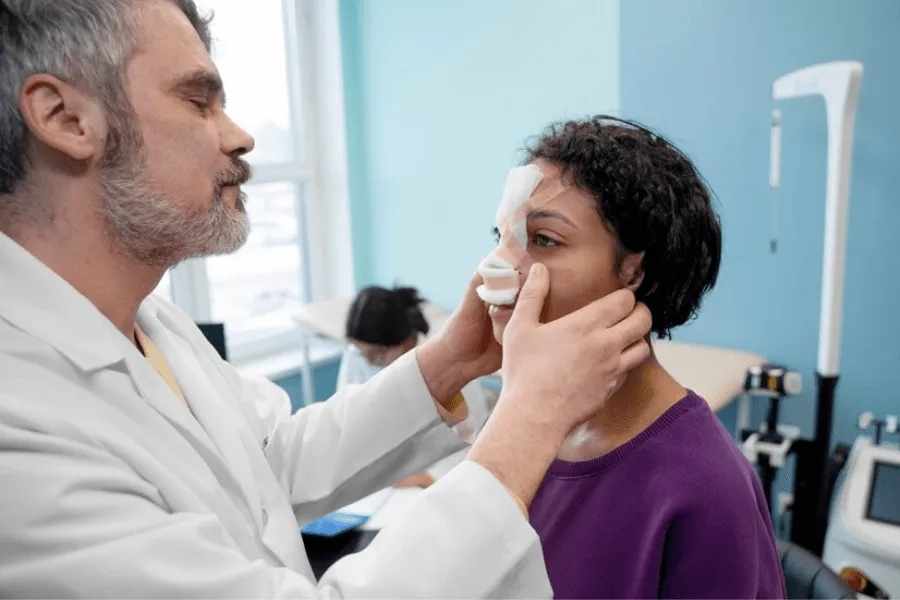Absence of the Septum Pellucidum
Overview

The septum pellucidum being MIA (missing in action) is a rare brain thing. Picture this thin membrane that's supposed to chill in the middle of your brain halves. Well, in this condtion, it's a no-show.
It usually pals around with the corpus callosum, a bunch of nerve fibers playing matchmaker between brain halves.
Now, it's not a solo rockstar – it's often seen in the entourage of septo-optic dysplasia, a brain abnormality VIP pass. This rare brain shindig doesn't have a cure, but it's not a life-threatening party crasher.
Some symptoms can be tamed. So, in a nutshell, the septum pellucidum playing hooky isn't the end of the world – just a quirky brain tale.
Symptoms
Causes & Risks
• Congenital malformation: Agenesis of the septum pellucidum is a congenital condition, occurring during fetal development. The precise cause is often elusive.
• Genetic factors: While some cases may have a genetic influence, specific mutations or factors responsible for the absence aren't consistently identified.
• Neurological and Developmental Issues: Agenesis might present as an isolated finding without apparent symptoms. Yet, in some cases, it can be linked to other brain abnormalities, potentially causing neurological problems and developmental delays.
• Behavioral and Cognitive Challenges: Individuals with this condition may face an elevated risk of behavioral problems, learning difficulties, and cognitive impairments.
• Psychiatric Disorders: Associations exist between septum pellucidum absence and psychiatric disorders like schizophrenia. However, the relationship is not fully understood, necessitating further research.
• Hydrocephalus: There's a potential increased risk of hydrocephalus, leading to the accumulation of cerebrospinal fluid in the brain, elevated intracranial pressure, and related symptoms.
Test & Diagnosis
• Neuroimaging scans: MRI and CT scans offer detailed brain images, aiding in septum pellucidum observation for its presence or absence.
• Ultrasound (in infants): Ultrasound imaging, used in prenatal care or for newborns, may detect brain abnormalities like septum pellucidum absence. However, it has limited resolution compared to MRI or CT scans.
• Clinical evaluation: Symptoms such as developmental delays or neurological issues prompt a doctor's investigation, often involving further imaging or tests.
• Genetic testing (in some cases): Suspected genetic influences or syndromes may lead to genetic testing, aiming to identify congenital abnormalities or mutations linked to septum pellucidum absence.
Treatment
• Symptomatic management: Treatment may involve managing developmental delays, cognitive impairments, behavioral issues, or seizures through therapy and medication.
• Neurosurgery: In some cases, neurosurgery may be considered to address associated brain abnormalities or hydrocephalus (accumulation of fluid in the brain) if present.
• Hormonal therapy: If hormone deficiencies are present due to associated pituitary abnormalities, hormone replacement therapy may be necessary.
• Early intervention programs: For children with developmental delays or intellectual disabilities, early intervention programs can be beneficial. These programs may include speech, occupational, physical, and special education services.
• Regular monitoring: Regular follow-up appointments with healthcare providers are essential to monitor for any changes in symptoms or the development of new complications.
• Genetic counseling: If the absence of the septum pellucidum is associated with a genetic syndrome, genetic counseling may be recommended for the individual and their family to understand the inheritance pattern and the risk of recurrence in future pregnancies.
Living With
Living with the absence of the septum pellucidum differs widely from person to person.
In many cases, its absence doesn't manifest noticeable symptoms or health concerns, enabling individuals to lead typical lives. Detection often occurs serendipitously during unrelated brain scans.
Management typically entails routine medical assessments, continual observation, and supportive interventions. Partnering with healthcare experts ensures adept handling, providing valuable support for those managing this condition.
Complications
• Neurological Symptoms: Individuals lacking the septum pellucidum may encounter developmental delays, learning difficulties, behavioral issues, or cognitive impairments.
• Hormonal Imbalances: The absence may be linked to hormonal abnormalities, especially affecting the pituitary gland, necessitating monitoring and management by endocrinologists.
• Associated Brain Abnormalities: In some instances, septum pellucidum absence coexists with other structural brain abnormalities or forms part of a larger syndrome, potentially leading to complex neurological conditions requiring specialized care.
• Hydrocephalus: Although rare, its absence may be associated with hydrocephalus, necessitating treatments like shunt placement to manage cerebrospinal fluid accumulation.
• Fertility Issues: Some reports suggest a potential link between septum pellucidum absence and reproductive or fertility issues, though further research is needed to fully understand this association.

The Content is not intended to be a substitute for professional medical advice, diagnosis, or treatment. Always seek the advice of your physician or other qualified health provider with any questions you may have regarding a medical condition.
Know more about
Our Healthcare Planner
Personal Health Planner at BNC is a support staff who listens to your concerns and connects you with a Neuro Care provider. They prioritize your needs and create a trusting relationship between you and the provider.
Three fundamental values we can assure you:
1. Personalized Healthcare.
2. Most advanced robotic therapies
3. Transparent pricing





